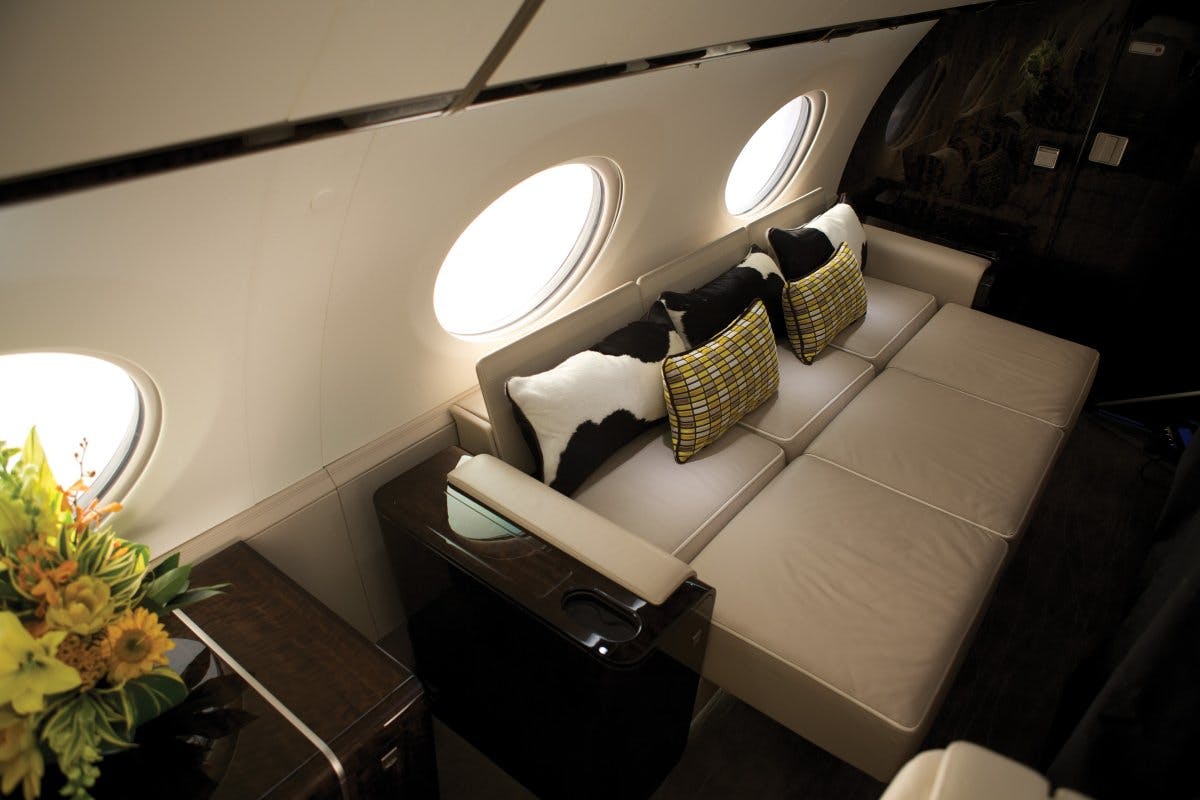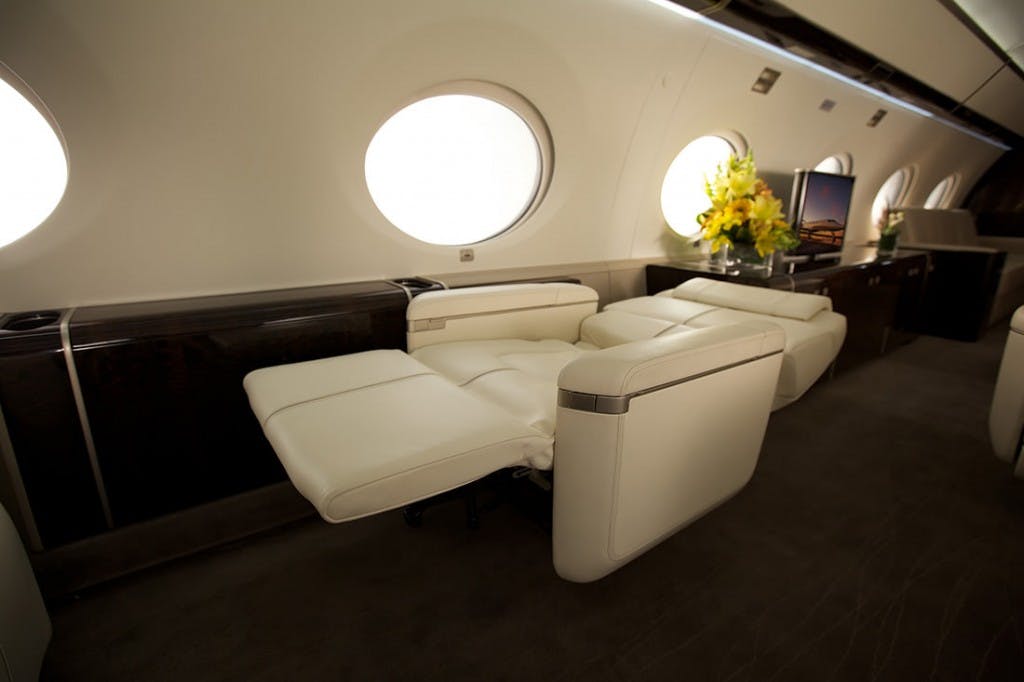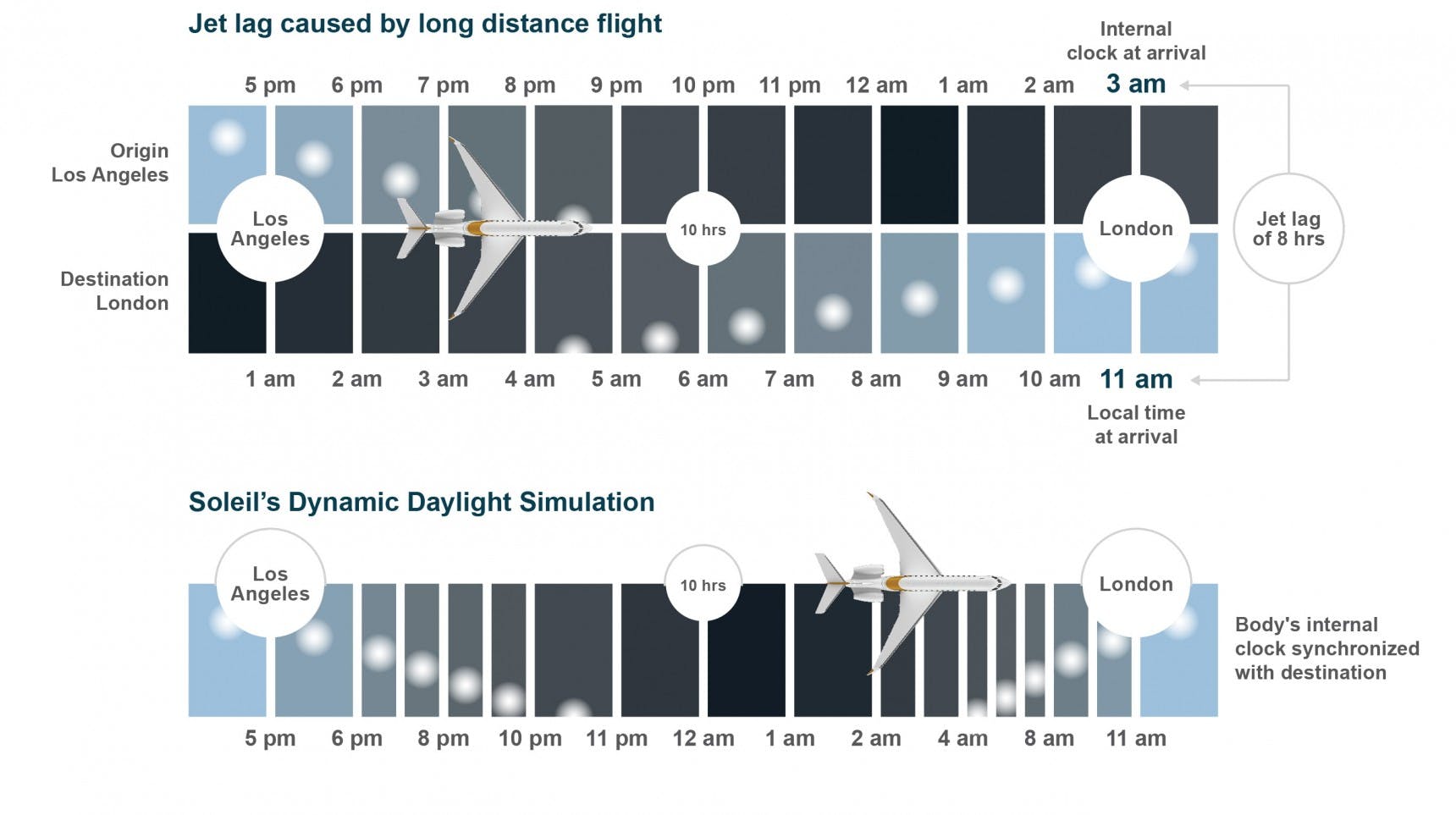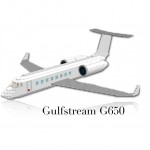Does private jet travel reduce jet lag?
Whether flying by private jet charter or commercially, jet lag can put a dampener on the start of any trip. Symptoms can range from disturbed sleep, daytime fatigue, difficulty concentrating, and even to digestive problems for some people travelling across multiple time zones.
But there are ways of mitigating the impact of jet lag, including some innovations by private jet manufacturers and designers.

What causes jet lag?
Jet lag is a series of symptoms that occur when our internal body clock is disrupted. This body clock keeps us in tune with the pattern of the day, helping us not only sleep at night, but also affecting hunger, mood and blood pressure.
Light is the main signals that help us to regulate this body clock, helping us reset our internal clocks each day to match the sun. This is why, the majority of the tips to follow below, revolve around light and light products.
Natural ways to prevent jet lag
Jet lag prevention is best begun before you even set foot on the aircraft. Even as early as a few days before your trip for the dedicated traveller.
The first recommendation is to change your sleep routine. If you’ll be travelling west, start going to bed later a few days before you travel. Or vice versa when travelling east.
Once you’re on the flight, here are a number of things you could do to combat the effects of jet lag.

1) Time your eating & sleeping
Try to eat and sleep according to the local time of your destination. Turn your watch to meet the local time to help you adjust your mind-set during the flight. This will help your body clock adjust to the new time zone before you even land.
2) Wear sunglasses
As discussed above, your body clock responds to how much light your eyes detect. Wearing sunglasses to control your exposure to natural and artificial light can help you set your body clock to a new routine.
3) Drink plenty of water
Dehydration makes jet lag even worse. It’s recommended that you drink plenty of water during the flight, and avoid caffeine and alcohol.
4) Get comfortable
Use earplugs and an eye mask to help create the right conditions for sleep. If you’re on a long haul flight, consider renting a jet with flat bed seat options, or even better, a bed.
5) Keep active

When you’re not sleeping, try to move around the cabin and stretch regularly.
After arrival, it’s important to spend the first day outdoors. Exposure to daylight helps the body adjust to the new time zone quicker – and being in natural light during different times in the day can help, depending on how far you travelled. If you travelled west, try getting some morning light once you arrive, and avoid the afternoon sun to help shift your body clock backwards. The opposite advice is recommended if you travelled east.
It’s also recommended to get a minimum of four hours of sleep during the local night. This will help train your body to operate on a 24-hour rhythm – vital for adapting to a new time zone. If you’re having trouble getting more than four hours at night, take short naps to help you get the same amount of sleep you’d normally have in a 24-hour window.

How private jet travel can reduce jet lag
On any private jet flight, your wellbeing is enhanced by the ability to schedule your departure time carefully to maximise sleep; bespoke catering; a peaceful and spacious cabin and a less stressful travel experience overall. But here are some of the specific ways private jet travel can help reduce the symptoms of jet lag.
Reclining seats & beds on private jets
Private jets offer the cabin space and comfort that commercial airlines cannot.
Super-midsize or long-range jets – such as those produced by Gulfstream, Dassault or Bombardier – are generally used for long flights and these offer high levels of comfort. The cabin is designed to have fully-reclining, ergonomic seating that can convert into a bed. Some private jets even have dedicated private bedrooms on board, such as the BBJ and ACJ converted VIP airliners.
Innovative lighting on board
More and more aircraft manufacturers are focusing on lighting on board to reduce the effects of jet lag. One of the most recent innovations is Bombardier’s Soleil system, for their new Global 7500.
The system adjusts the lighting according to the biological rhythm and preferences of passengers – using natural, relaxing or dynamic lighting.

Cabin pressure & humidity
Some of the latest business jets, such as the Gulfstream G650, have cabin management systems which feature 100% fresh air and lower cabin altitude to reduce fatigue and ease jet lag effects.
Lower cabin altitude means the heart and lungs don’t have to work as hard to oxygenate the blood. At a cruise altitude of 41,000 feet/12,497 meters, the G650’s cabin is pressurised to 3,290 ft/1,003 m – more than twice as low as commercial airlines.
Lower humidity also helps to reduce the effects of jet lag and dehydration. Some private jets, such as the Dassault Falcon 8X, have high-performance cabin systems that adjust the temperature and humidity of the air.
Whether you’re flying across many timezones or none, our expert flight team can advise on the best aircraft for your trip. Contact us 24/7 on +44 (0)20 7100 6960.
Related content

$50m of orders for the Valkyrie, but delivery date unclear



